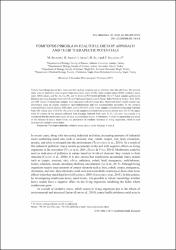FOMITOPSIS PINICOLA IN HEALTHFUL DIETARY APPROACH AND THEIR THERAPEUTIC POTENTIALS
Abstract
Certain macrofungi species have been used for medical purposes and as nutrients since the old times. The present study aims to determine and compare total antioxidant status (TAS), total oxidant status (TOS), oxidative stress index (OSI) values, and Fe, Zn, Cu, Pb, and Ni levels in Fomitopsis pinicola (Sw.) P. Karst samples gathered in Balikesir province Kazdagi National Park and Yalova province Einarcik Hasan Baba Woods in Turkey. TAS, TOS, and OSI values of mushroom samples were measured with Rel Assay kits. Mushroom heavy metal content was determined using an atomic absorption spectrophotometer and wet decomposition procedure. In the samples collected from Einarcik district, OSI values were 0.99 +/- 0.03, while in the samples collected from Kazdagi National Park, OSI values were 0.13 +/- 0.01. Fe content in the samples collected from Cinarcik district were 265.9 +/- 70.5 ppm, while Fe content in the samples collected from Kazdagi National Park were 31.31 +/- 1.43 ppm. As a result, it is considered that the mushrooms could be used as antioxidant source. Furthermore, it could be argued that as a result of the increase in heavy metal levels, the production of oxidants increases in living organisms, which in turn increases the oxidative stress index.


















